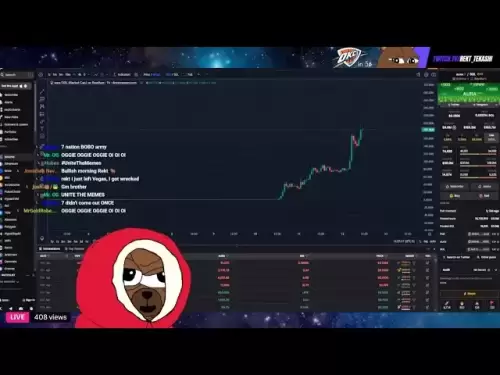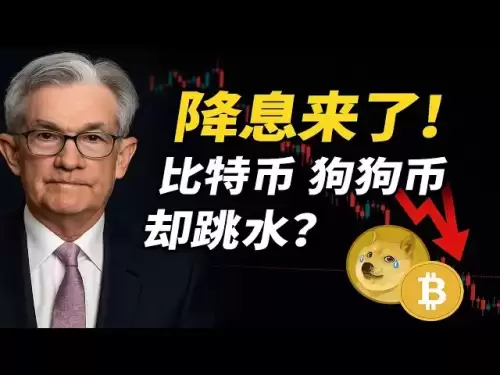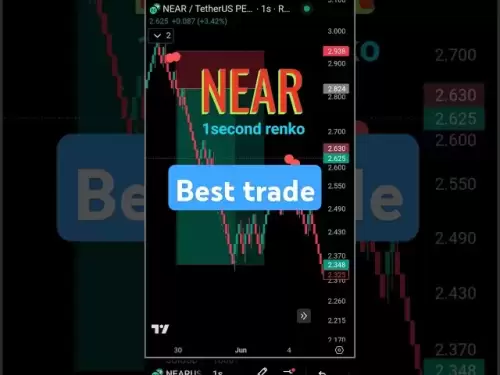 |
|
 |
|
 |
|
 |
|
 |
|
 |
|
 |
|
 |
|
 |
|
 |
|
 |
|
 |
|
 |
|
 |
|
 |
|
Cryptocurrency News Articles
Circle explores plugging its USD Coin (USDC) stablecoin into UAE's remittance corridors
Jun 12, 2025 at 05:11 pm
Stablecoin issuer Circle, fresh off a $1 billion initial public offering on the New York Stock Exchange, is in early talks with money-transfer houses in the UAE

Stablecoin issuer Circle, fresh off a $1 billion initial public offering on the New York Stock Exchange, is in early talks with money-transfer houses in the UAE to plug its USD Coin (USDC) into one of the world’s busiest remittance corridors.
Circle is the sole issuer of USDC, the world’s second-largest stablecoin, with a market cap of around $60 billion.
Stablecoins aim to hold a steady value, typically redeemable 1:1 for traditional currency, but they are not insured or protected like bank deposits.
USDC is backed by cash and short-term US Treasuries held by BNY Mellon and managed via a BlackRock money-market fund.
Tokens settle on public blockchains in seconds and cost just a fraction of a cent to send – making them useful for payments, savings and transfers.
Circle president Heath Tarbert told AGBI the company is “starting dialogues” with remittance firms and others who want to start making stablecoins like USDC available in their network.
“They can help adopt this technology and not be left behind. Consumers will be paying far less, and they’ll get their money sooner,” he said.
Tarbert says embedding USDC into payment rails could slash costs “30 to 100 times” versus traditional remittances, which rely on correspondent banks and can take days to clear.
About nine million expatriates send more than $44 billion home each year from the UAE.
Global remittance costs average 6.62 percent of the amount sent, with banks charging as much as 13.64 percent, World Bank data shows.
In the Middle East, the average is 6.45 percent.
Last year, UAE exchange houses raised fees by at least 15 percent for the first time in five years, adding $0.68 (AED2.50) per transfer.
The increase came as traditional players such as Al Ansari Financial Services reported a 2024 net profit of AED 405 million, down 18 percent from a year earlier, citing “intense fintech competition” and rising costs.
India is the largest remittance corridor from the UAE, driven by the country’s large Indian expatriate population.
Tarbert, a former US Treasury official, said remittance firms can either risk losing ground to stablecoins or adapt.
“They will obviously have a share in the economics through customer relationships,” he said. “Everyone can win.”
Still, stablecoins carry risks.
USDC briefly lost its dollar peg and fell below 87 cents in 2023 after the company revealed it had nearly 8 percent of its reserves tied up at the collapsed lender Silicon Valley Bank.
Tether, the world’s largest stablecoin issuer, paid a $41 million settlement in 2021 for misleading investors about USDT being fully backed by fiat currencies at all times.
Circle has secured in-principle approval from Abu Dhabi Global Market’s regulator to operate as a money-services provider.
“Many [businesses] in the region can’t get their hands on dollars or it’s difficult because of correspondent banking,” Tarbert said.
“It’s a very important region for us to grow and invest in.”
Circle and stablecoins
Circle’s IPO surged 168 percent on debut, valuing the company at more than $21 billion – the strongest US listing this year.
Shares continued climbing to a high near $123.50 before easing to about $106, which is still a roughly 240 percent gain since it began trading.
Circle’s USD Coin already accounts for more than half of all crypto transactions in the UAE – the highest share globally, according to Chainalysis.
In stable Gulf economies, Circle says USDC offers faster, lower-cost cross-border payments.
In fragile economies where dollars are scarce and black market rates dominate, stablecoins such as USDC offer a workaround – helping users to receive and hold dollar-linked funds in crypto wallets, while avoiding banking limits and currency collapse.
In Lebanon, for instance, some residents turned to stablecoins to protect savings as the Lebanese pound plunged and banks restricted dollar withdrawals.
The stablecoin market is worth about $230 billion today but could grow to $3 trillion by 2030, Citigroup estimates.
Disclaimer:info@kdj.com
The information provided is not trading advice. kdj.com does not assume any responsibility for any investments made based on the information provided in this article. Cryptocurrencies are highly volatile and it is highly recommended that you invest with caution after thorough research!
If you believe that the content used on this website infringes your copyright, please contact us immediately (info@kdj.com) and we will delete it promptly.
-

-

- HKMA explores blockchain-based efficiency in asset subscription using a stablecoin backed by the AUD converted into a Hong Kong CBDC
- Jun 13, 2025 at 09:35 pm
- The exercise involved a simulation in which a stablecoin backed by the AUD was converted into a Hong Kong central bank digital currency (CBDC) and subsequently used to purchase a tokenized money market fund.
-

-

-

-

-

-

-






























































